Japan Travel: Odaiba

photo credits: gotokyo.org
Odaiba, the artificial island of shopping and entertainment
The first time I saw Odaiba was thanks to the Natsuko Takahashi animated series, “Tokyo Magnitude 8.0” (東京マグニチード). In the anime, the protagonists go to a robot exhibition on the island, beautifully detailed in its reproduction. At that moment I had the idea to insert in our editorial calendar an article about this place so technological and colorful!
Odaiba (お台場) was born under the Tokugawa shogunate at the end of the Edo period in the form of 6 small artificial fortified islands. The purpose of these islands was to protect and contrast possible attacks against Tokyo by the ships of the Commodore Perry fleet.
More than 100 years later, in the early 1980s, the small islands were joined together to create a huge residential and financial district. The project suffered a major slowdown due to the outbreak of the “bubble economy” in 1991, leaving Odaiba almost completely abandoned. It wasn’t until the second half of the 1990s that the large unified artificial island became one of Tokyo’s most famous tourist attractions, with populated hotels, shopping malls, restaurants, shops, and the Yurikamome elevated railway line.
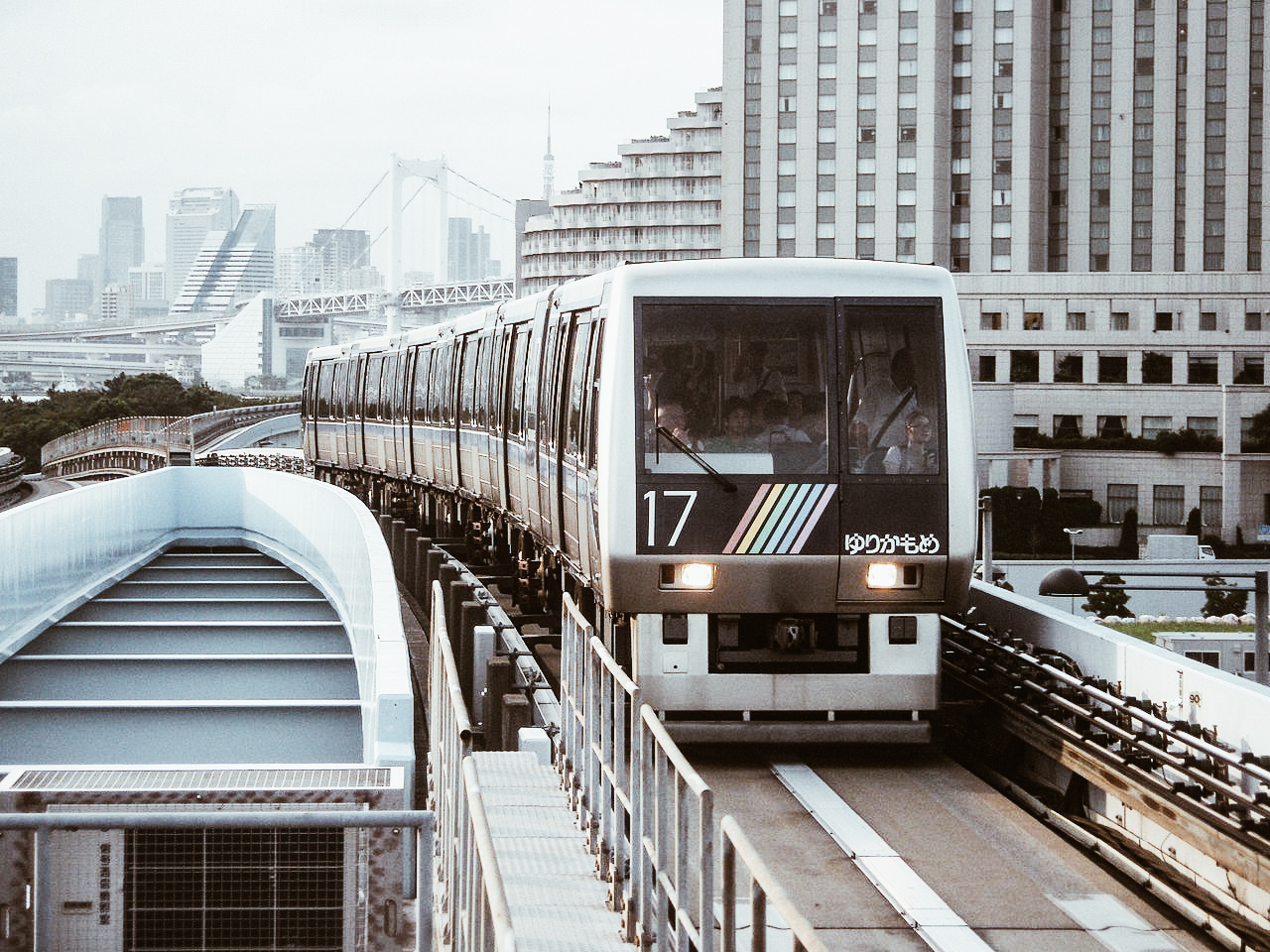
photo credits: wikipedia.org
Two sides of the same island: West Odaiba, East Odaiba
West Odaiba is home to large parks and shopping centers. Among the most scenic, we find the Odaiba Seaside Park which extends on the north coast and where a replica of the Statue of Liberty stands right on its beach. The first of the island’s largest shopping centers are located here. It’s the Decks Tokyo Beach in which you can visit Madame Tussaud’s wax museum. The second shopping center is Acqua City with its two floors dedicated to catering, various shops, a multiplex cinema, a wedding chapel and the Sony Explora Science Technology Museum: a science museum that explores “light”, “sound” and ” entertainment. ”
(For all information on the museum, you can visit the official website, in English: https://www.sonyexplorascience.jp/english/)

photo credits: anaintercontinental-tokyo.jp
Not far from Acqua City is the Fuji TV Building, one of the most bizarre buildings in Japan. From the ultra-futuristic style. This 25-story building was designed by the architect Kenzo Tange and completed in 1997. Headquarters of the Fuji Television Network, making it particularly attractive is the titanium silver sphere on top of it. Thirty-two meters in diameter, inside this element there is a viewing platform open to the public that offers a complete view of Tokyo and Mount Fuji.

photo credits: gaijinpot.com
Further south lies the Diver City Tokyo Plaza, Odaiba’s third-largest shopping mall designed to be the “theatrical space of the city”. It is an almost mandatory destination for foreign visitors in Tokyo because it offers a wide selection of Japanese themed souvenirs in many of its shops and as many authentic Japanese restaurants.
If you think shopping malls are enough, you’re wrong. And with Palette Town that Odaiba wins everything. Much more than a simple aggregation of shops, it is a real mini city. Its towering Ferris wheel, known as Daikanransha (大観覧車) can be seen all over the island thanks to its 115m of height as an undisputed sign of fun and joy. Palette Town offers numerous attractions whose focus is Venus Fort, the realm of shopping. Venus Fort was opened in 1999 and was designed to take on the features of 17th century Europe, complete with an artificial sky painted on the roof that follows the alternation of day and night as if you were really in the open air.
Just below Venus Fort is the Sun Walk, which offers a collection of shops for pet lovers. Here you can not only eat at the Dog Cafe but even rent a dog for an hour to take it for a walk. Palette Town also includes the technological showcase of Toyota Mega Web, the entertaining lounge for leisure time and one of the most popular entertainment venues for live events: the Zepp Tokyo (ゼップ東京).
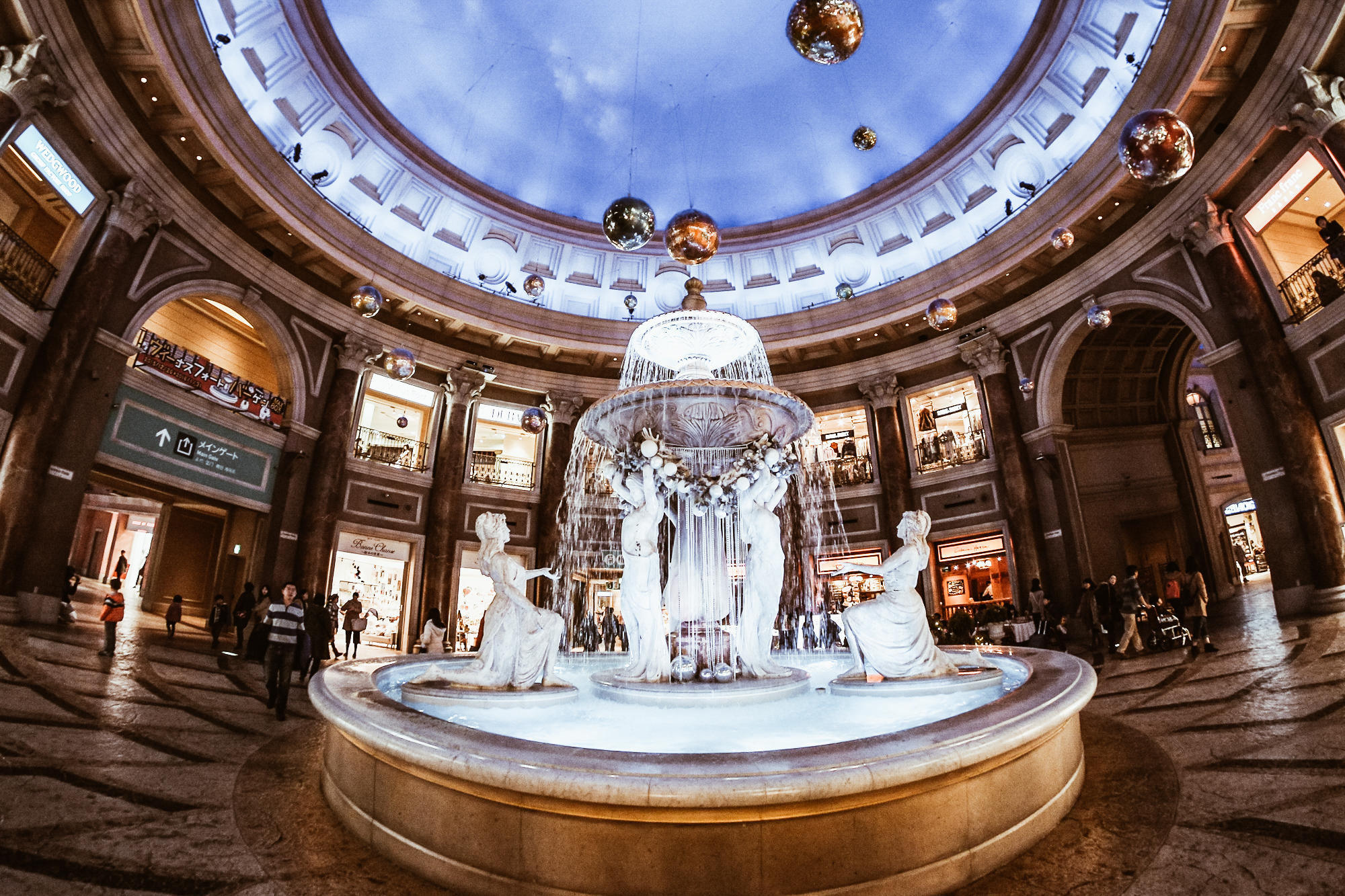
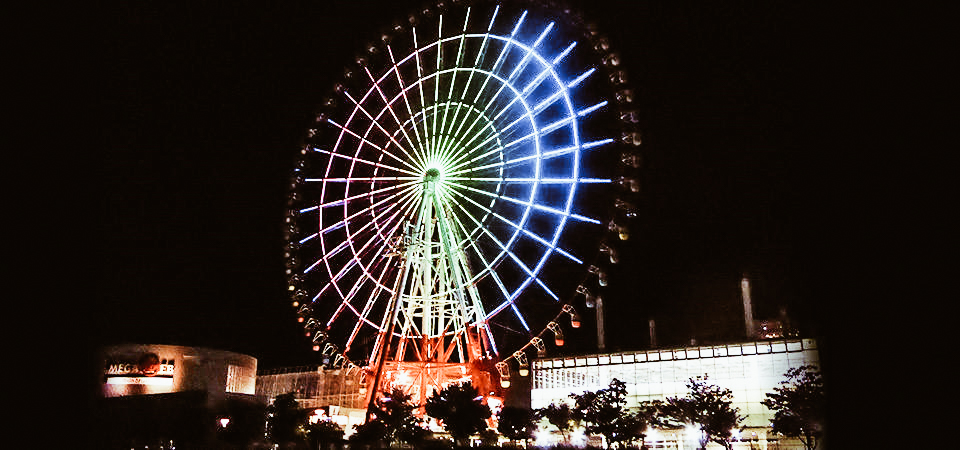
photo credits: scottshaw.org, shutoko.jp
Odaiba Est is entirely dedicated to exhibitions and sports.
Of great importance is the Tokyo Big Sight (Tokyo International Exhibition Center), one of the main arenas and convention centers of the nation. It is here where the fencing, wrestling and taekwondo events will be hosted during the 2020 Tokyo Olympics. Opened in 1996, the Tokyo International Exhibition Center stands out thanks to its iconic Conference Tower made up of four inverted pyramids. The entire Tokyo Big Sight complex has numerous restaurants, cafes, a grocery store and a sales corner dedicated to Big Sight goods.

photo credits: mystays.com
Next to it there’s the Panasonic Center, a showroom for new products and new Panasonic technologies. On the first floor is the Atrium Exhibition where sponsorships of events and all the advertising campaigns of the electronics giant take place all over the world. Also on the same level is the Wonder Life-Box where visitors are presented with the new technologies of the future and the company’s latest products. The second-floor houses RiSuPia, an interactive museum focused on hidden mathematics in nature and science. Extremely beloved is the Nintendo Game Front where all the latest Nintendo games are present with the chance to try them! Here is also the Cafe E-Feel for a gourmet break thanks to its wide range of coffees, desserts and light meals.
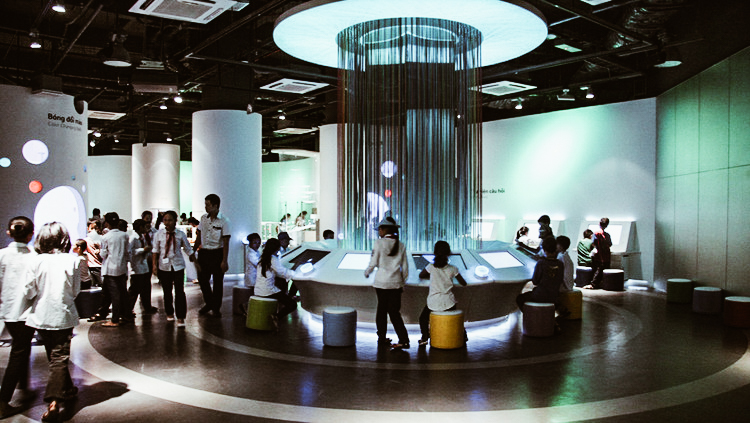
photo credits: expology.com
In this part of the neighborhood, there is also the Tennis – no – Mori Park, a huge center dedicated to the game of tennis with 48 courts. Also present was the Ariake Coliseum stadium, an indoor sports arena in the Ariake Tennis Forest Park which can hold up to 10,000 people.

photo credits: tokyo20ty20ty.com
Reaching Odaiba
Reaching Odaiba from Tokyo is easy! You can opt for the boat thanks to the Tokyo Water Bus or the Tokyo Cruise. Alternatively, you can take a taxi or just hop on the Yurikamome train, the TWR Rinkai Line or the Japan Railways. However, if you love walking, then don’t think twice: the Rainbow Bridge is for you! An 800-meter long bridge that is not opened at night and in case of bad weather or festive events.
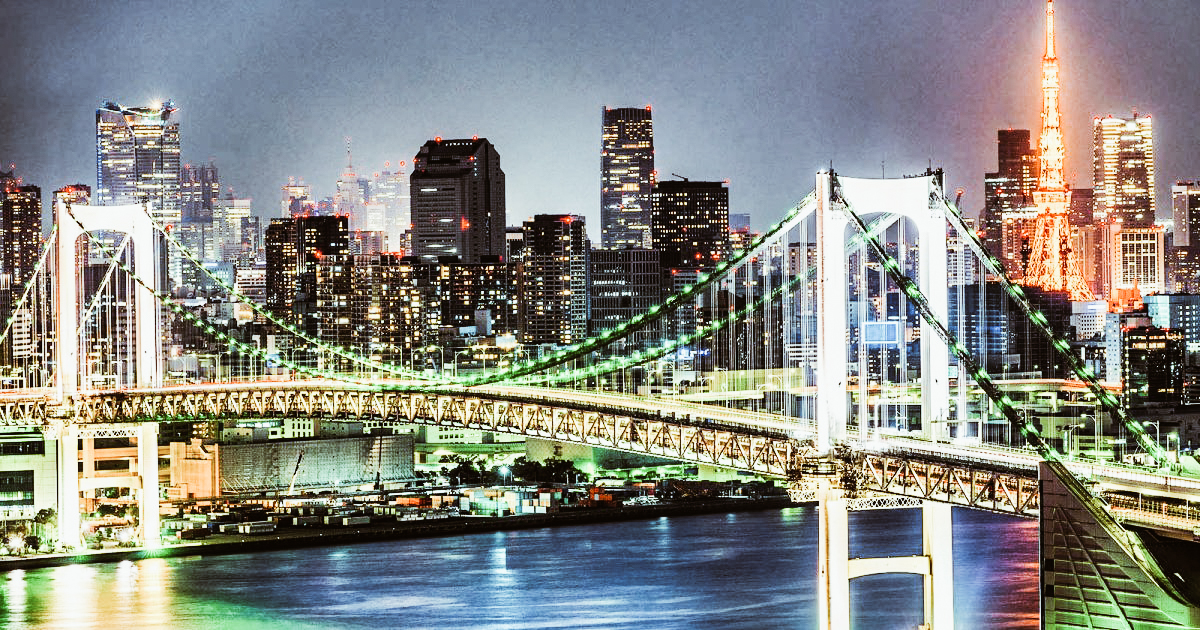
photo credits: mywowo.net
Do you think this will be enough to visit Odaiba? There are really many inputs. Like all the rest of Japan, every corner takes on an enormous charm that increases from time to time discovering the complex details that have made it.[:]
Share this:
- Click to share on Facebook (Opens in new window)
- Click to share on Twitter (Opens in new window)
- Click to share on Tumblr (Opens in new window)
- Click to share on Pinterest (Opens in new window)
- Click to share on Telegram (Opens in new window)
- Click to share on WhatsApp (Opens in new window)
- Click to share on Reddit (Opens in new window)
- Click to print (Opens in new window)






